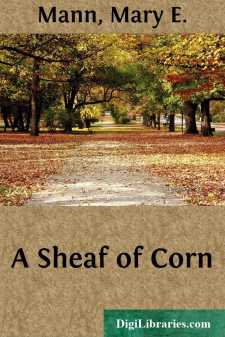Categories
- Antiques & Collectibles 13
- Architecture 36
- Art 48
- Bibles 22
- Biography & Autobiography 813
- Body, Mind & Spirit 142
- Business & Economics 28
- Children's Books 17
- Children's Fiction 14
- Computers 4
- Cooking 94
- Crafts & Hobbies 4
- Drama 346
- Education 46
- Family & Relationships 57
- Fiction 11829
- Games 19
- Gardening 17
- Health & Fitness 34
- History 1377
- House & Home 1
- Humor 147
- Juvenile Fiction 1873
- Juvenile Nonfiction 202
- Language Arts & Disciplines 88
- Law 16
- Literary Collections 686
- Literary Criticism 179
- Mathematics 13
- Medical 41
- Music 40
- Nature 179
- Non-Classifiable 1768
- Performing Arts 7
- Periodicals 1453
- Philosophy 64
- Photography 2
- Poetry 896
- Political Science 203
- Psychology 42
- Reference 154
- Religion 513
- Science 126
- Self-Help 84
- Social Science 81
- Sports & Recreation 34
- Study Aids 3
- Technology & Engineering 59
- Transportation 23
- Travel 463
- True Crime 29
Mary E. Mann
Mary E. Mann (1848–1929) was an English author known for her vivid depictions of rural life in East Anglia. She wrote over 40 books, including novels, short stories, and children’s literature, often focusing on the hardships and social dynamics of village life. Some of her notable works include "The Parish Nurse" and "The Patten Experiment," which explore themes of poverty, class struggles, and the human condition. Mann's writing is characterized by its realism and deep empathy for her characters, earning her recognition as a significant voice in 19th-century British literature.
Author's Books:
Sort by:
by:
Mary E. Mann
WOMEN O' DULDITCH Dinah Brome stood in the village shop, watching, with eyes keen to detect the slightest discrepancy in the operation, the weighing of her weekly parcels of grocery. She was a strong, wholesome-looking woman of three- or four-and-forty, with a clean, red skin, clear eyes, dark hair, crinkling crisply beneath her sober, respectable hat. All her clothes were sober and respectable,...
more...
by:
Mary E. Mann
CHAPTER I Their Large Hours It was three o'clock in the morning when the guests danced Sir Roger de Coverley at Mrs. William Day's New Year's party. They would as soon have thought of having supper without trifle, tipsy-cake, and syllabub, in those days, as of finishing the evening without Sir Roger. Dancing had begun at seven-thirty. The lady at the piano was drooping with weariness....
more...



